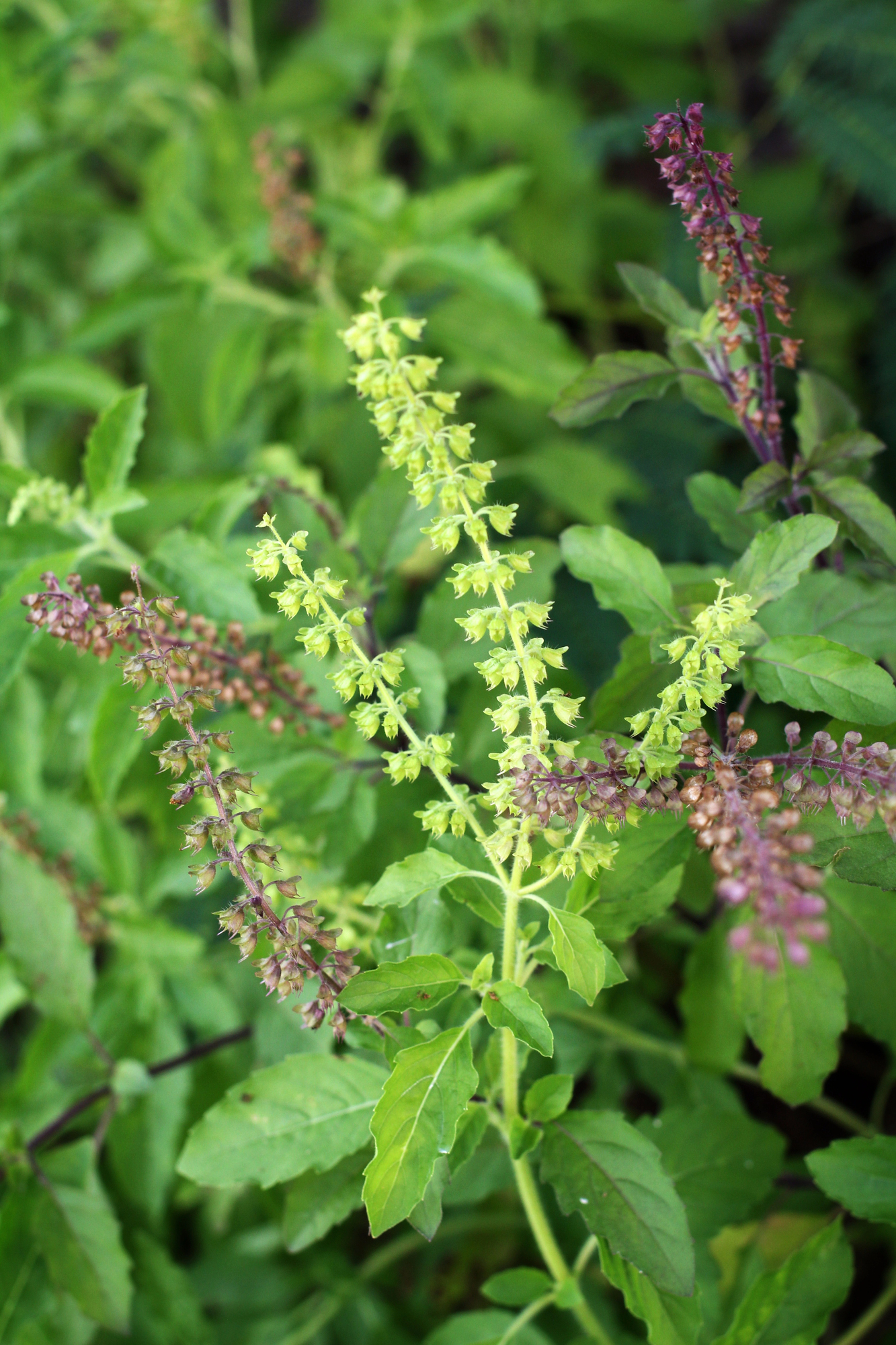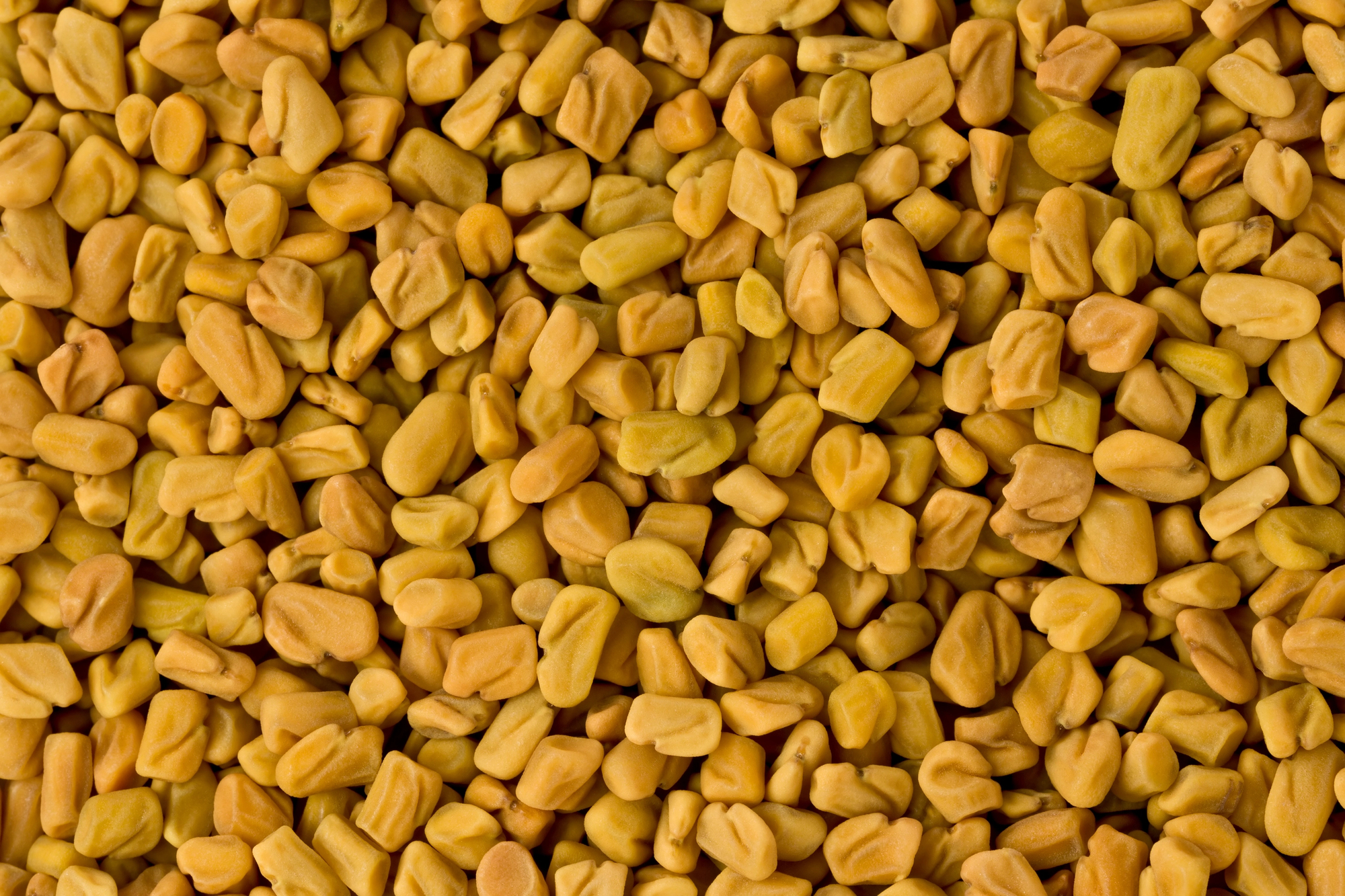Stress Hormones & Insulin Metabolism
Introduction
In my practice, I repeatedly encounter the connection between stress and glucose and insulin metabolism. In this white paper, we will examine the impact of stress, including the fact that it does not always have a negative impact. We will examine what is normal in terms of stress, what is not, and what to do if a person is stuck in the “fight or flight” mode. We also will look at the connection between glucose and insulin metabolism and stress, then discuss how to get that back to balance.
In our modern world, stress is the bad guy. Our patients say “I’m so stressed out!” Ideally, that is not how stress is supposed to work. A normal, small amount of stress gets us out of bed in the morning. It pushes us to finish a project at work and makes sure we get dinner on the table on time. In and of itself, stress is not a bad thing; it’s when the normal mechanisms are off-balance that problems arise. Stress is present to help us maintain homeostasis. What we think of colloquially as stress is really distress, and we will differentiate between the two in this paper.
Allostatic Load & Adaptation
The term allostatic load refers to the normal wear and tear that we accumulate due to daily life. This includes chemical exposures, dietary intake, exercise, emotional and physical stress, EMF (electromagnetic field—everything the body has to attend to in order to maintain homeostasis). Depending on the intensity and duration of the exposure, your body either adapts well or it doesn’t.
An example of episodic exposure would be when your boss goes on a rant and yells at you once in a blue moon. The next day, you are both fine. Your body goes into the fight- or-flight mode for a day or so and then comes back down. If it does not happen again any time soon, you can deal with it.
In the case of consistent exposure, if it is mild, you can usually tolerate that. An example would be if your drive to work takes you down a street where you have a good chance of getting stopped by a train. It is irritating and consistent, but you can deal with it. If your boss is yelling at you every day, that is a different story. With consistent stress, you can adapt up to a certain point. When episodic exposure happens with an increasing variety and intensity, that becomes more of an issue. It starts to take you longer to recuperate. At that point, you have an allostatic load that you can’t tolerate. That overwhelming exposure becomes beyond your ability to compensate.
The above diagram illustrates the role of the HPA axis. The hypothalamus receives information from the central nervous system, both physical and cognitive stressors. There is also information coming in from circadian rhythms. The hypothalamus then produces corticotrophin-releasing hormone, which goes to the anterior pituitary. The anterior pituitary then makes ACTH, which goes to the adrenals and stimulates production of cortisol, the main stress hormone.
As part of its activity, cortisol production goes back and delivers negative feedback on both the anterior pituitary and the hypothalamus. This feedback mechanism allows for appropriate stress response while maintaining balance and order. A modest amount of cortisol for an appropriate amount of time slows the hypothalamus and the pituitary back down.
Healthy Response to Stress
A healthy response to stress starts with an alarm that is usually inflammatory in nature. For example: you cut your hand or you get yelled at. It does not matter what the alarm is, but it will always set up an inflammatory cascade. This stimulates tissue defenses and increases sympathetic tone, including epinephrine production. This is a very short-lived phase.
The response phase is anti-inflammatory in nature. The HPA axis activity kicks in. This takes a bit longer. Under adaptation, both inflammatory and anti-inflammatory activity resolve and everything goes back to normal. That is what is supposed to happen with a small amount of stress that happens once in a while.
When under alarm, the injury or threat—either tissue damage or emotional response— will cause norepinephrine and epinephrine production from adrenals, which then triggers the fight-or-flight reaction. That reaction then produces inflammatory chemicals such as catecholamines, prostaglandins, cytokines and heat shock proteins. That manages to neutralize the stressor.
Response/Resistance Phase
The body then proceeds to the response and resistance phase. During this phase, the hypothalamus releases CRF, which stimulates the pituitary to release ACTH. This in turn stimulates cortisol release. This is why sometimes patients complain of physical discomfort a month or more after a stressful event, though the emotional repercussions have long been resolved. This is because the cortisol is being released and causing trouble “downstream.” In addition to cortisol, two other inflammatory hormones—IL-6 and TNF alpha—are being released. The cortisol then inhibits inflammatory pathways and tries to calm things back down. It eventually blocks CRF and ACTH so that everything can return to normal.
Continued or Repeated Stress
With continued or repeated stress, the process is different. If you are exposed to stress every time you turn around, your body never gets a chance to slow down. The process of habituation leads to chronic HPA activation. That yields chronically elevated cortisol that stops blocking the reaction of the hypothalamus and the anterior pituitary. At this point, the body is subject to persistent inflammation because the usual anti- inflammatory pathways are not initiating. Elevated cortisol also stimulates gluconeogenesis in the liver, leading to increased fat production. In turn, TNF alpha, IL-1, IL-6 and CRP lead to peripheral insulin resistance. Increased fat production stimulates insulin production as part of the inflammatory response. Under continued or repeated stressors, the body very rapidly ratchets up the inflammatory pathways, which ends up leading to insulin resistance.
The diagram below demonstrates this process, including the eventual triggering of gluconeogenesis, which produces glucose and, in turn, fat. This process is what has been referred to in popular media as “cortisol belly.”
Exhaustion
The HPA axis is not designed to stay “on” forever; its activity will eventually falter. When that happens, the cortisol levels that had been high for a long time begin to fall. At this point, worsening organism response and ultimately death can happen. That is not common, as most people seek medical attention far before reaching that phase.
Effects of Cortisol & Insulin
In the top left corner of the diagram above, stress stimulates CRF, which goes to the HPA axis. In turn, the HPA axis increases cortisol and has an effect on fear conditioning and energy issues, among other problems. On the right are leptin and ghrelin, two hormones that are concerned with dietary intake, insulin resistance and fat growth.
Prolonged elevated cortisol will lead to insomnia and fatigue. It is well-documented that cortisol, as well as melatonin and a few other hormones, are the primary drivers behind falling asleep and staying asleep. In addition, cortisol levels that are continually increased leads to dysglycemia because of decreased glucose uptake and use by cells, as well as increased gluconeogenesis and glycogenolysis from the liver. Prolonged elevated cortisol also leads to increased insulin and leptin, as cortisol “sits” on insulin receptors and prohibits them from doing their job. Insulin levels rise in response to the higher glucose levels. In addition to simply leading to increased amounts of insulin and leptin, it contributes to a decreased effect of those hormones in the central nervous system. The body has an excess of leptin and insulin, which the central nervous system then ignores. On many levels, the body is affected when cortisol levels are off.
Stress Hyperglycemia
When intensive care units first started decades ago, stress hyperglycemia was a thoroughly covered topic in medical literature. In the critically ill, hyperglycemia appears to be a fundamental role of the innate immune system, one that is critical to survival.
Patients who are incredibly ill in the ICU will often have blood glucose levels in the 200s. Initially, the reaction was that such high levels were extreme and needed to come down immediately. We later found out that trying to get it too low would actually have a detrimental effect.
Humans have the highest elevation of cortisol in response to stress than any other mammal; not only does it go up higher than other mammals, but it also stays up longer.1 For example, if a rabbit is chased but gets away into the woods, it simply resumes eating or doing whatever it had been doing. It does not hold on to that stress. If we as humans are chased, once we are safe, we start telling people about it and then worrying about it. Humans drag out the fight-or-flight response. While that might have been beneficial in the past, it no longer is.
Leptin
Leptin is the satiety hormone, and it is connected to insulin in that an increase in the leptin leads to a rise in insulin and vice versa. Leptin kicks in as we eat, to let us know that we are full. It decreases dopamine, which makes food feel less rewarding. This hormone affects the hypothalamus to decrease feeding behavior. Leptin’s increase in tandem with a rise in insulin makes sense: If one has just eaten, glucose levels will have increased, which means insulin has taken effect. After insulin is activated, the leptin should be triggered to alert the body that the act of eating is in progress and digestion/assimilation should be triggered. In the presence of toxic levels of stress, leptin levels will usually decrease; however, there is some controversy in the literature regarding this. It seems to vary with the type of stress involved, and there are some genetic Single Nucleotide Polymorphisms (SNPs) associated with how one makes leptin. For example, specific genetic SNPs appear to produce leptin that does not function properly. In some individuals, this variance could be a contributing factor to obesity.
Ghrelin
Ghrelin is known as the “hunger” hormone, and it tends to increase with stress. Many women, for example, regularly experience the effects of ghrelin in the week before menstruation occurs. This hormone can affect action in the amygdala to trigger fear, independent of usual hypothalamic-pituitary-adrenal axis action. There is some question as to whether or not some people will “stress eat” even though there is no danger in the moment. However, their cortisol or DHEA levels, which are part of the usual HPA axis, are within normal ranges and will not have changed. The ghrelin is what is triggering the feeding behavior. It has also been seen to decrease anxiety triggered in the hippocampus. As with leptin, there has been some controversy in the literature, but ghrelin has been shown to stimulate anti-inflammatory pathways in the brain.
The question is: Does ghrelin go up to protect the brain from inflammation, even at the expense of metabolic issues in the presence of potential insulin resistance? Current research indicates this scenario is possible: In the light of stress, ghrelin needs to be activated because it ultimately will cause anti-inflammatory pathways and save the brain. While the individual will gain weight, the brain will be preserved. Whether this is definitely happening or just a possibility remains to be determined.
Growth Hormone
Human growth hormone is a major downstream effector of the ghrelin receptor. It is upregulated in the amygdala in light of chronic stress. Elevations in this hormone lead to insulin dysregulation.2 Some practitioners will prescribe growth hormone as a treatment modality. It requires careful oversight, as insulin dysregulation can ultimately occur.
Mood and Obesity
Several studies have examined the connection between mood and obesity. In a large cross-sectional epidemiological U.S. study, a body mass index greater than 30 was found to be associated with a 25 percent higher rate of mood disorders.3 In examining the stress hormone patterns of those who have anxiety and depression, they are consistent with someone who has chronic stress. Another studied found that major depression in late adolescent girls was associated with a 2.3-fold increased risk of obesity in adulthood, mostlikelybythesamemechanismastheaforementionedstudy.4 Inaddition,U.S. veterans with post-traumatic stress disorder were found to show a significantly increased rate of obesity.5 In this study, they were comparing individuals with similar lifestyles; the only significant difference was the PTSD. These studies appear to draw the connection between mood and obesity; as illustrated below, that is the result of emotional stress hitting the hypothalamus, leading to cortisol production and then visceral obesity.
Herbal Interventions
When individuals are caught in the flight-or-fight mode, there are many options for intervention, which occur at various points throughout the process. In my practice, I have found herbs to be incredibly helpful, but individuals must still address the issue of stress management for lasting change to occur. That is, if someone is taking herbal supplements but still living as though a tiger is chasing him or her, it can be compared to driving with one foot on the gas and the other on the brakes. In such cases, the herbs cannot achieve their full efficacy in the continued presence of excess stress.
Three of the most common ways to intervene with herbs are to modulate the stress response, modulate insulin expression and activity, and improve sleep, which lowers ghrelin and increases leptin.
Adaptogenic Herbs
Adaptogens, which exert an effect on the adrenal glands, are the herbs recommended as the course of treatment. These herbs improve the body’s nonspecific response to stress. They also tend to increase ACTH and cortisol with single high-dose administration, but they normalize those hormones with longer-term use. The primary mechanism is to restore hypothalamic and pituitary sensitivity to the negative feedback of cortisol. Many adaptogens work to improve the normal HPA axis sensitivity.
Ashwagandha (Withania somnifera)
Ashwagandha (Withania somnifera) is a frequently used plant. Among its active constituents are alkaloids, steroidal lactones and saponins. This herb also has amphoteric, anti-inflammatory and antioxidant properties. Ashwagandha is a hypoglycemic agent, is immune supportive and is a neuroendocrine tonic, meaning it can regulate the HPA axis in light of chronic stress.
One study found that it upregulates Th1 and slightly down regulates Th2 within the immune system.6 The herb has been found to cause recovery of chronic stress-depleted T cells with a shift to Th1; it also lowers corticosterone and liver markers of stress.7 With regards to the anti-inflammatory capacity, Ashwagandha inhibits the complement system and delayed hypersensitivity reaction.8
A double-blind, placebo-controlled study of 39 subjects evaluated the efficacy of an ethanolic extract of Ashwagandha in patients with ICD-10 anxiety disorders. After six weeks, significantly more patients met a priori response criteria in the treatment group (88.2%) as compared with the placebo group (50%). No more adverse effects were reported in the Ashwagandha group than in the placebo group. The dose used was a standard extract of 500 mg BID standardized to contain 5% withanolides. 9
Rhodiola (Rhodiola rosea)
Rhodiola (Rhodiola rosea) is another herb that is commonly used as an adaptogen. This low-growing plant, which hails from Eastern Europe, was studied a great deal in what was then the Soviet Union. The herb has been shown to improve endurance, mood and mental clarity. Brain “fog” is common in the presence of stress, which makes Rhodiola a very good option in such situations. It also has been shown to lower blood sugar. Its main constituents are Rosavins and flavonoids.
In a multicenter, non-randomized, open-label, single-arm, four-week trial of people with self-reported stress, 200mg of Rhodiola extract was delivered twice daily. While the study itself is not the best, the findings are interesting enough to warrant a mention. Scores from all validated questionnaires showed clinically relevant improvements in feelings of stress, disability from stress, functional impairment and overall wellness.10 Regardless of the self-reported nature and the short length, this study does show that Rhodiola can be helpful.
The primary active constituents in Holy Basil (Ocimum sanctum), which is another commonly used adaptogen, are Eugenol and triterpenoic acids. It also has been shown to decrease cortisone levels and can improve mood and mental clarity.
One self-reported study of 35 adults with an average age of 38.4 years took 500 mg of Holy Basil twice daily after meals. This resulted in a significant decrease in generalized anxiety and reduced feelings of stress and depression (p<0.001). Holy Basil also increased the individuals’ motivation to make lifestyle and perception changes.11 For example, they wanted to be more social and eat better. This is an interesting finding, as not all studies ask such questions.
Nervines
The group of herbs called nervines are calming, nerve tonics that balance the autonomic nervous system. They also influence neurotransmitter production, but they are not sedating; they simply “take the edge off.” Herbs in this category can be very helpful when it comes to supporting stress response in order to maintain control of insulin levels.
While Lavender (Lavender angustifolia) has several active constituents, the volatile oils are the ones on which we will focus. Lavender has been shown to potentiate GABA receptors, and it inhibits glutamate binding in brain. It has been extensively studied: There are more than 440 random controlled trials of Lavender and anxiety alone.
As with Lavender, the volatile oils of Valerian (Valeriana officinalis) are the focus of the medicinal use. These volatile oils bind to GABA receptors, stimulate GABA production and also slow its degradation. It works on at least two levels by improving production of GABA and not letting it go away.
Valerian root commonly is used for nervous excitement and consequent palpitations as well as sleeplessness. It does not work universally for sleep, but it does work for most.
In a four-week, double-blind, randomized, controlled trial of 100 postmenopausal women, between 50-60 years old, with insomnia, they either received either 530mg of concentrated Valerian root extract or placebo twice daily.12 All participants were followed by phone and completed a sleep questionnaire.
About 30% of the participants in the Valerian group and 4% in the placebo group reported an improvement in sleep quality (P < 0.001).
Insulin Metabolism Modulators
Beyond adaptogens and nervines, there are other herbs that can directly influence insulin metabolism. The four highlighted herbs are just a small selection of those that can have an impact.
Bitter Melon (Momordica charantia)
Unlike many of the other herbs discussed, Bitter Melon (Momordica charantia) is traditionally consumed as a food, in stir-fries or other dishes. It can be purchased whole or as a supplement.
The important active constituents are its glycosides, alkaloids and glycoproteins. It appears to act on a couple different levels. Bitter Melon suppresses glucose-6- phosphatase, so it actually slows the process of creating glucose. It also improves insulin sensitivity and insulin signaling throughout the organism. That is, when Bitter Melon is consumed, not only is glucose not being produced as quickly, but the body is more sensitive to insulin and thus paying more attention to it.
Fenugreek (Trigonella foenum-graecum) is traditionally used as a spice in various cultures, with its main constituents being fiber and saponins.
In a number of studies, it has been shown to improve fasting glucose in those with metabolic syndrome and Type II Diabetes Mellitus, but it will not have an effect on those who have normal blood sugar levels. (On that level, it almost meets the criteria for an adaptogenic herb.) Fenugreek, in studies, has been shown to lead to significant reduction in HgBA1C, a test that provides a clue into the average blood sugar level over the previous three months.13 (Even if fasting blood sugar is normal, it is important to check HgBA1C.)
Like the other herbs mentioned in this section, Cinnamon also is traditionally taken as a food, but it can be taken as a supplement, too. It works to increase phosphorylation of insulin receptors, increase glucose uptake and improve lipids.14 With long-term use, it lowers LDL, increases HDL and normalizes triglycerides. Cinnamon activates glycogen synthase, so glucose can more easily be converted to glycogen.
Curcumin (Curcuma longa)
Curcumin (Curcuma longa) is a versatile adaptogenic herb with a rich history and numerous studies to bolster its traditional use. It has been shown to lowers cortisol, and it induces NrF2 in hepatocytes. Turmeric lowers blood glucose and HgBA1C.
Herbs to Improve Sleep
With regards to sleep, there are a number of herbs that can help. Most of those listed below are sedative or nervine herbs that will help relax the body and help people get to sleep:
- Valerian
- Kava Kava
- Hops
- Passionflower
- Skullcap
- California Poppy
Case Study
A 54-year-old patient has been menopausal for two years. She sought treatment for increasing weight gain in the midsection and insomnia. She also is experiencing occasional night sweats, though they are improving and she feels those—-as well as her sleep issues—are related to stress or diet. She eats a fairly healthy diet and exercises regularly. She has no reported change in diet or exercise; however, a recent job change yielded increased responsibility. She is having issues with a high-maintenance teenage child and recently had to move a parent into assisted living. (This parent had been living with the patient.)
Some of her pertinent lab results are:
- Fasting blood sugar 88 (reference range 65-99)
- This is not a bad number.I like patients to aim for 70s to 80s. When it starts to get into the low 90s, I consider that a red flag to start looking at insulin more closely.
- HgbA1C 6.3
- This is .2 away from diabetic, well into the pre-diabetes range.Ideal is around 5.
- Fasting insulin 11
- Normal fasting insulin should be significantly lower than 10.She did not undergo a post-prandial insulin test, but a normal result for that test is 33.
- AM cortisol 25
- This lab’s reference range is 4 to 22, but the range is slightly misleading.
That is simply two standard deviations on a bell curve; to be normal, the number should be in the middle of those two. Ideal morning cortisol is 10 or 11.
- AM DHEA 130
- This is another stress hormone. The lab I use has a range of 100 to 1,000.
This is another case of two standard deviations on a bell curve. Her DHEA is quite low; when cortisol is high with low DHEA, that is indicative of long-term stress. Initially they both increase, but over time as the body tires of being in fight-or-flight mode, it will drop off the DHEA to keep the person calm and prevent panic during the emergency.
She is in Phase 2 of chronic stress. In Phase 1, both cortisol and DHEA are elevated. In phase 2, the cortisol is still up, but the DHEA is dropping. In Phase 3, both will drop.
In terms of pertinent physical clinical findings, she had multiple new skin tags around places on the body where there is friction, such as around her neck and bra line. Waist to hip ratio had increased to 1 (normal is <0.85), and her body mass index was 33 (25 is overweight and 30 is obese). These are all consistent with insulin resistance, especially when coupled with weight gain.
This is a suggested treatment protocol for the patient:
- Holy Basil 50mg BID
- Rhodiola 120mg BID
- Ashwagandha 500mg BID
- Fenugreek 2 ml tincture TID
- Cinnamon 1 ml tincture QID
- Passionflower tea QHS
Adaptogens are rarely used alone; they are used in combination, as they each work under different pathways. I also added the Fenugreek and Cinnamon in liquid herbal extract form to jump-start her system. When her insulin is back into normal ranges she might be able to use them as food products instead. The nightly Passionflower tea is to help her relax and sleep better.
This is a simple, comprehensive way to get stress and insulin under control quickly. I asked her to make sure she is exercising regularly, as that improves insulin sensitivity. I reminded her to work on her diet, as she admitted that she binges on sugar during times of stress. I pointed out that when her insulin levels are under control, she will have more leeway in her diet. Over time, with herbal intervention and lifestyle changes, she will see better control of her insulin levels.
About the Author
Dr. Wendy Warner, MD, ABIHM, is board certified in obstetrics and gynecology as well as in integrative holistic medicine. She attended the University of Tennessee, Memphis, medical school and completed her residency in obstetrics and gynecology at Temple University Hospital in Philadelphia, where she was chief resident. She has also been the chair of the department of OB/GYN at two hospitals in suburban Philadelphia and was the medical director of the Holistic Medicine Center at St. Mary Medical Center in Langhorne, PA. She is the founder and director of Medicine In Balance, LLC, in suburban Philadelphia, where she provides integrative holistic women’s health services, as well as integrative medicine consultations for women, men and teens.
She is a nationally known lecturer and teacher, and a past-president of the American Board of Integrative Holistic Medicine (ABIHM). She has been on the board of directors of ABIHM for a decade and has helped the organization certify thousands of physicians in integrative holistic medicine.
She is frequently sought out as a thought leader by the press and has been quoted in Ladies Home Journal, Women’s Day and other popular magazines. She was also an invited guest on the Dr. Oz Show, discussing a Functional Medicine approach to menopausal management.
She is a member of the Gaia Herbs Scientific Advisory Board.
Areas of Expertise:
Women’s healthcare, menopause management (including bioidentical hormone prescribing), hormone balancing throughout the lifespan, autoimmune disorders and other immune dysregulation conditions, adrenal dysfunction, and a functional medicine approach to other chronic conditions such as hypertension, diabetes, hyperlipidemia, and thyroid dysfunction.
References
- Int J Endocrinol 2014: 204. 486-503
- Molecular Psychiatry (2014) 19, 1284–1294
- Archives of General Psychiatry, vol. 63, no. 7, pp. 824–830, 2006.
- Biological Psychiatry, vol. 62, no. 4, pp. 321–326, 2007.
- Progress in Neuro-Psychopharmacology and Biological Psychiatry, vol. 30, no. 6, pp. 1150–1154, 2006
- Vaccine. 2009 Oct 9;27(43):6080-7
- Int Immunopharmacol 2009 Sep;9(10):1137-44 8
- Vascul Pharmacol 2006 Jun;44(6):406-10
- Andrade C, et al. Indian J Psychiatry. 2000;42(3):295-301.
- Edwards D. Phytother Res. 2012;26(8):1220-5
- Bhattacharyya D. Nepal Med Coll J. 2008;10(3):176-9
- Taavoni S. et al. Insulin Metabolism Modulators. Menopause. 2011;18(9):951-955
- Nutr J. 2014; 13: 7



















